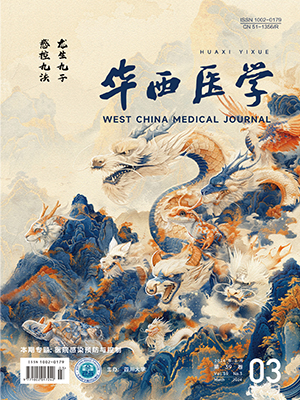| 1. |
Benowitz I, Moulton-Meissner HA, Epstein L, et al. Gastrointestinal flexible endoscopes: infection control risks, lessons learned from outbreaks, and centers for disease control and prevention guidance. Gastrointest Endosc Clin N Am, 2020, 30(4): 723-733.
|
| 2. |
Snyder GM. Introduction to transmission of infection: potential agents transmitted by endoscopy. Gastrointest Endosc Clin N Am, 2020, 30(4): 611-618.
|
| 3. |
廖想, 李依倪. 消化内镜医院感染现状及其预防措施研究进展. 中国消毒学杂志, 2021, 38(2): 140-143.
|
| 4. |
Rauwers AW, Kwakman JA, Vos MC, et al. Endoscope-associated infections: a brief summary of the current state and views toward the future. Tech Gastrointest Endosc, 2019, 21(4): 150608.
|
| 5. |
Kumarage J, Khonyongwa K, Khan A, et al. Transmission of multi-drug resistant Pseudomonas aeruginosa between two flexible ureteroscopes and an outbreak of urinary tract infection: the fragility of endoscope decontamination. J Hosp Infect, 2019, 102(1): 89-94.
|
| 6. |
Wang P, Xu T, Ngamruengphong S, et al. Rates of infection after colonoscopy and osophagogastroduodenoscopy in ambulatory surgery centres in the USA. Gut, 2018, 67(9): 1626-1636.
|
| 7. |
张琳, 营建华, 李远菁, 等. 消化内镜相关医院感染现状及其影响因素. 中华医院感染学杂志, 2023, 33(15): 2391-2395.
|
| 8. |
莫海亚, 张道权. 胃动力内镜检查发生医院感染危险因素及管理措施分析. 中国医药导报, 2022, 19(24): 65-68.
|
| 9. |
刘运喜, 邢玉斌, 巩玉秀. 软式内镜清洗消毒技术规范 WS 507-2016. 中国感染控制杂志, 2017, 16(6): 587-592.
|
| 10. |
孙振球, 徐勇勇. 医学统计学. 4 版. 北京: 人民卫生出版社, 2014: 107-108.
|
| 11. |
Pereira ML, Bergamo RT, da Silva FM, et al. Risks of infection associated with aerosol generation during medical procedures in an endoscopy unit. J Hazard Mater Adv, 2022, 8: 100174.
|
| 12. |
Shimpi RA, Spaete JP. Quality assurance in endoscopic infection control, disposable duodenoscopes, and the environmental impact of endoscopy. Tech Innov Gastrointest Endosc, 2022, 24(3): 290-299.
|
| 13. |
孔懿, 黄英, 张亚英, 等. 南京市 10 家中医院的软式内镜清洗消毒现状调查. 中国消毒学杂志, 2020, 37(12): 934-937.
|
| 14. |
申良荣, 李倩, 李宝珍. 陕西省 170 所医疗机构消化内镜清洗消毒现状调查. 中国消毒学杂志, 2017, 34(12): 1129-1131.
|
| 15. |
Suresh S, Pande M, Patel K, et al. Education, training, and knowledge of infection control among endoscopy technicians and nurses. Am J Infect Control, 2021, 49(6): 836-839.
|
| 16. |
Suresh S, Mahometano LD, Romero LG, et al. Tu1105 survey of education, training, and knowledge of endoscopy nurses and techs on infection control in the endoscopy unit. Gastrointest Endosc, 2020, 91(6S): AB547-AB548.
|
| 17. |
冯翠兰. 消化内镜消毒效果监测研究新进展. 中国医学工程, 2017, 25(8): 28-31.
|
| 18. |
黄茜莎, 刘波, 张翔, 等. 滤膜法与涂抹法检测内镜清洗消毒效果及成本比较. 中国感染控制杂志, 2019, 18(6): 571-576.
|
| 19. |
朱炫瑞, 庄宜锦, 刘文龙, 等. 吉林省 72 所医疗机构软式内镜终末漂洗用水管理现状调查. 中国感染控制杂志, 2022, 21(7): 642-650.
|
| 20. |
史庆丰, 胡必杰, 崔扬文, 等. 上海市 30 所三级医疗机构软式内镜终末漂洗水现状调查. 中华医院感染学杂志, 2020, 30(6): 923-926.
|
| 21. |
王伟民, 马久红. 67 所医疗机构内镜终末漂洗水使用调查及相关因素分析. 中华医院感染学杂志, 2019, 29(10): 1587-1590.
|
| 22. |
王萍, 鲍容, 史庆丰, 等. 某综合医院消化内镜生物膜形成现状及影响因素分析. 华西医学, 2021, 36(3): 348-352.
|
| 23. |
Walker JT, Bak A, Marsden G, et al. Final rinse water quality for flexible endoscopy to minimize the risk of post-endoscopic infection. Report from Healthcare Infection Society Working Party. J Hosp Infect, 2022, 124: 79-96.
|




